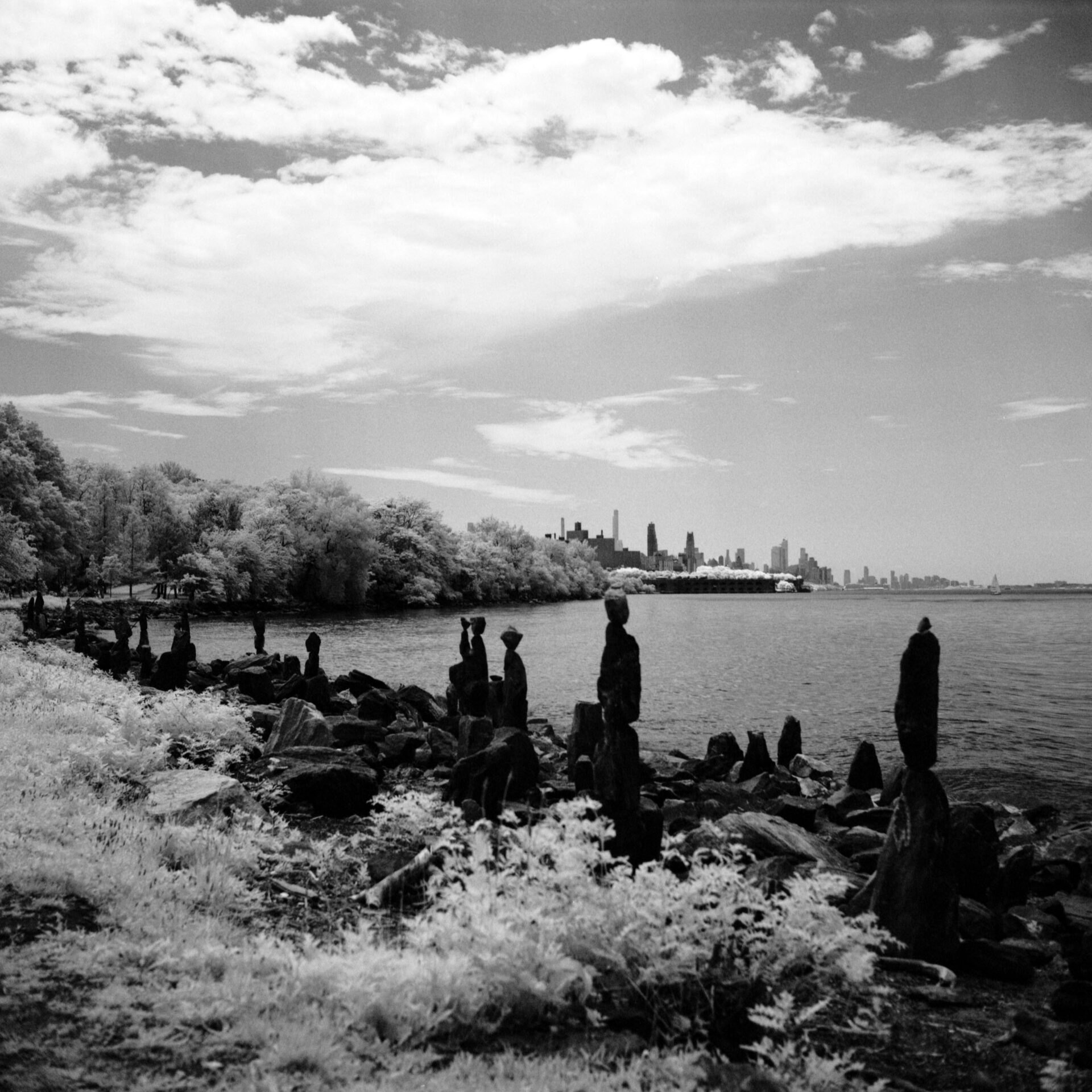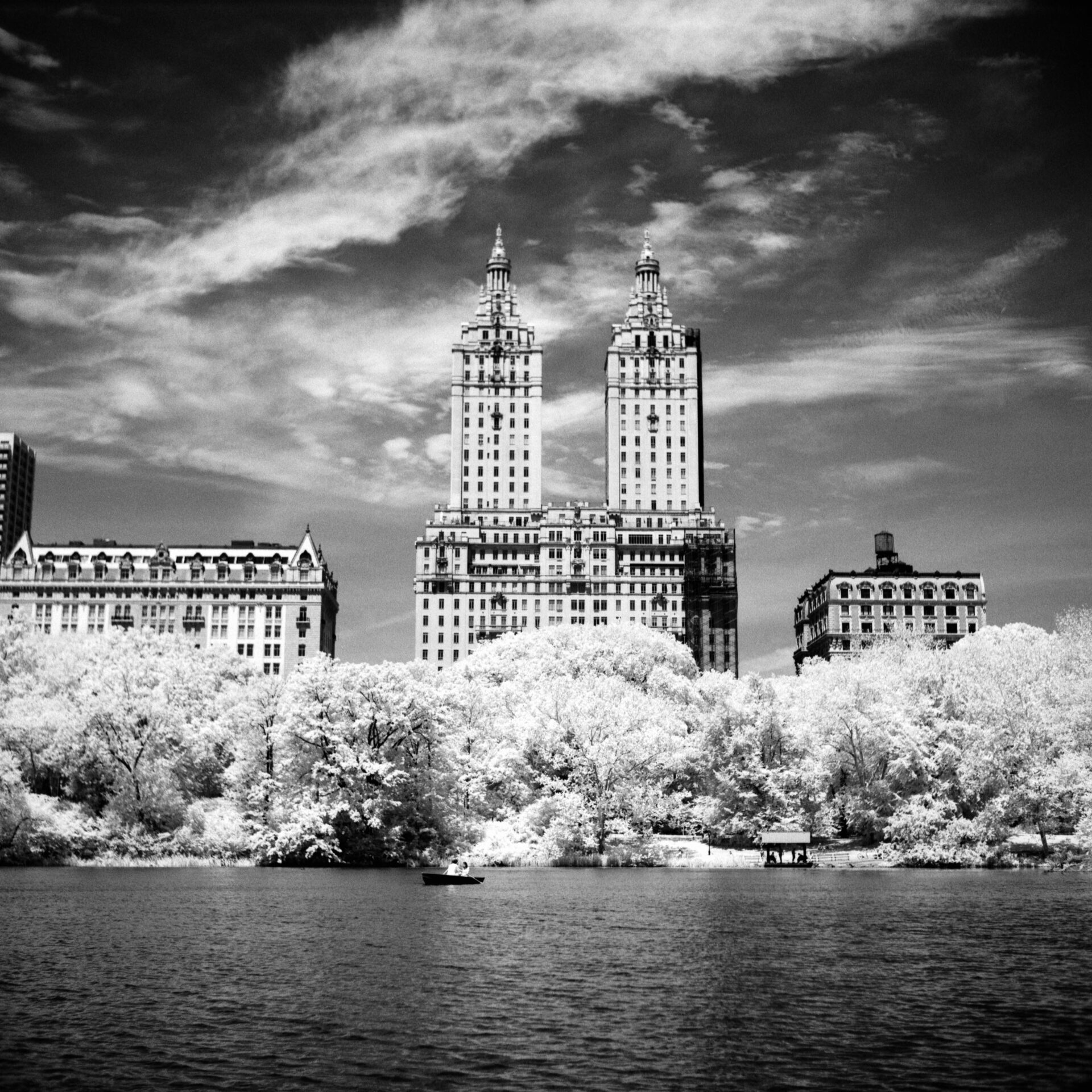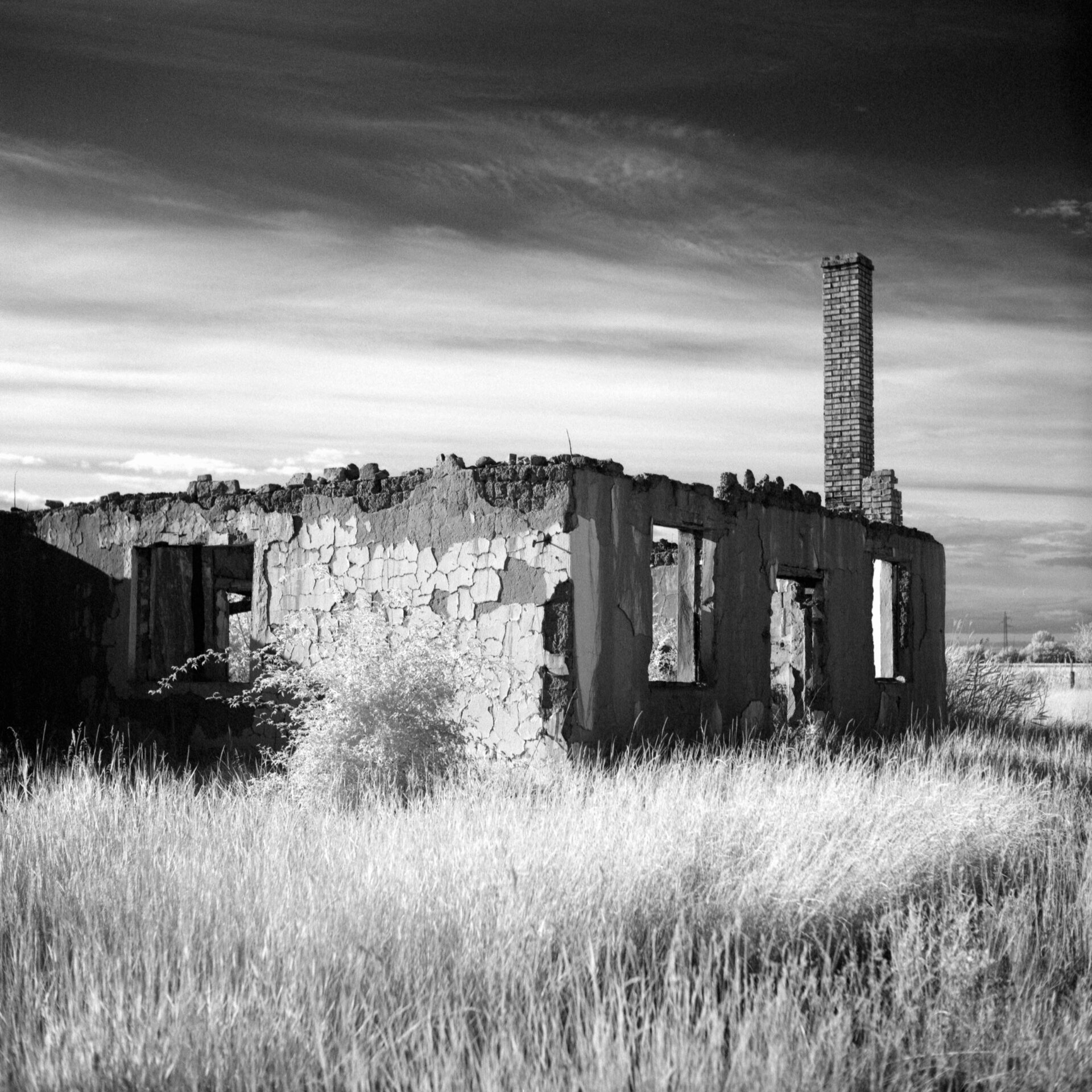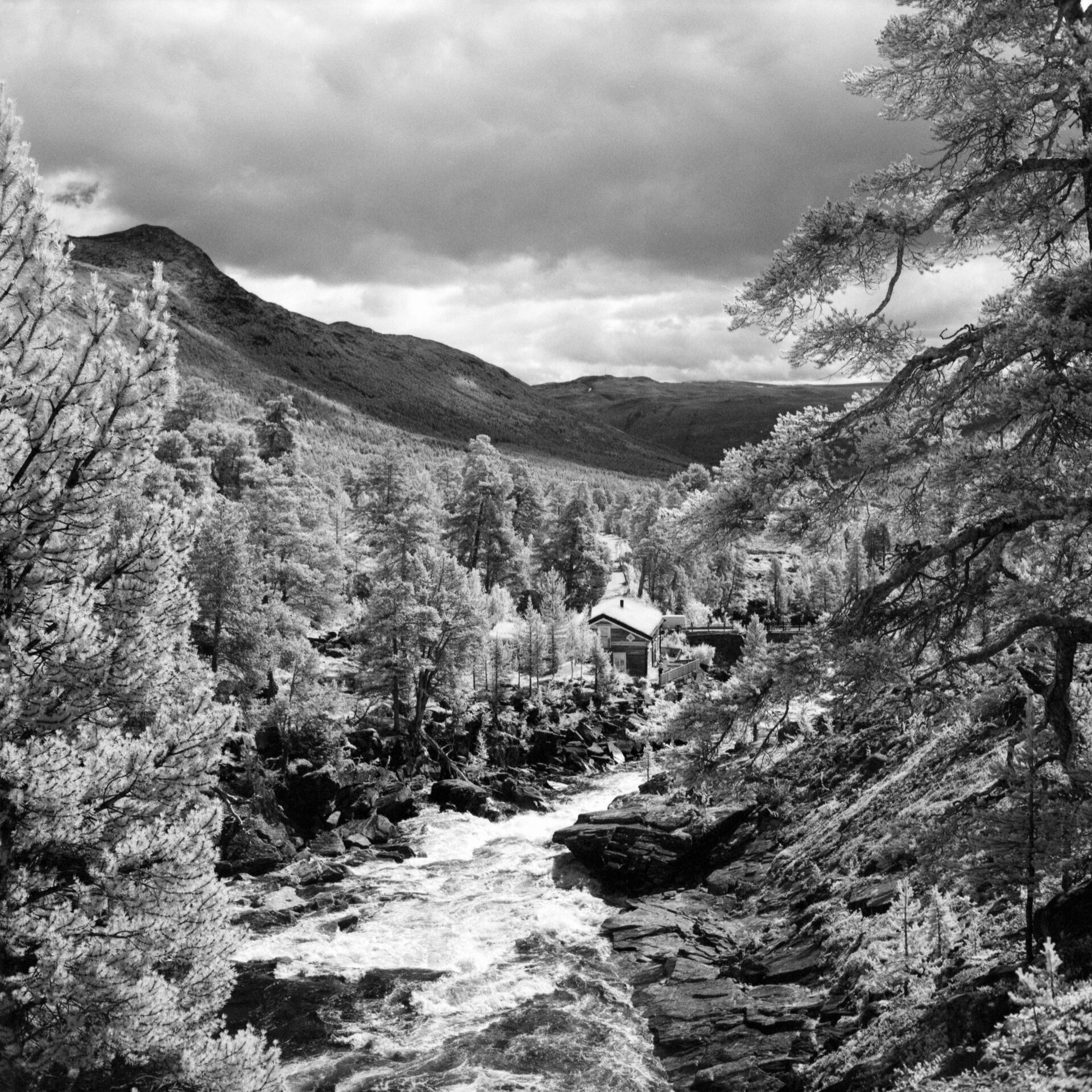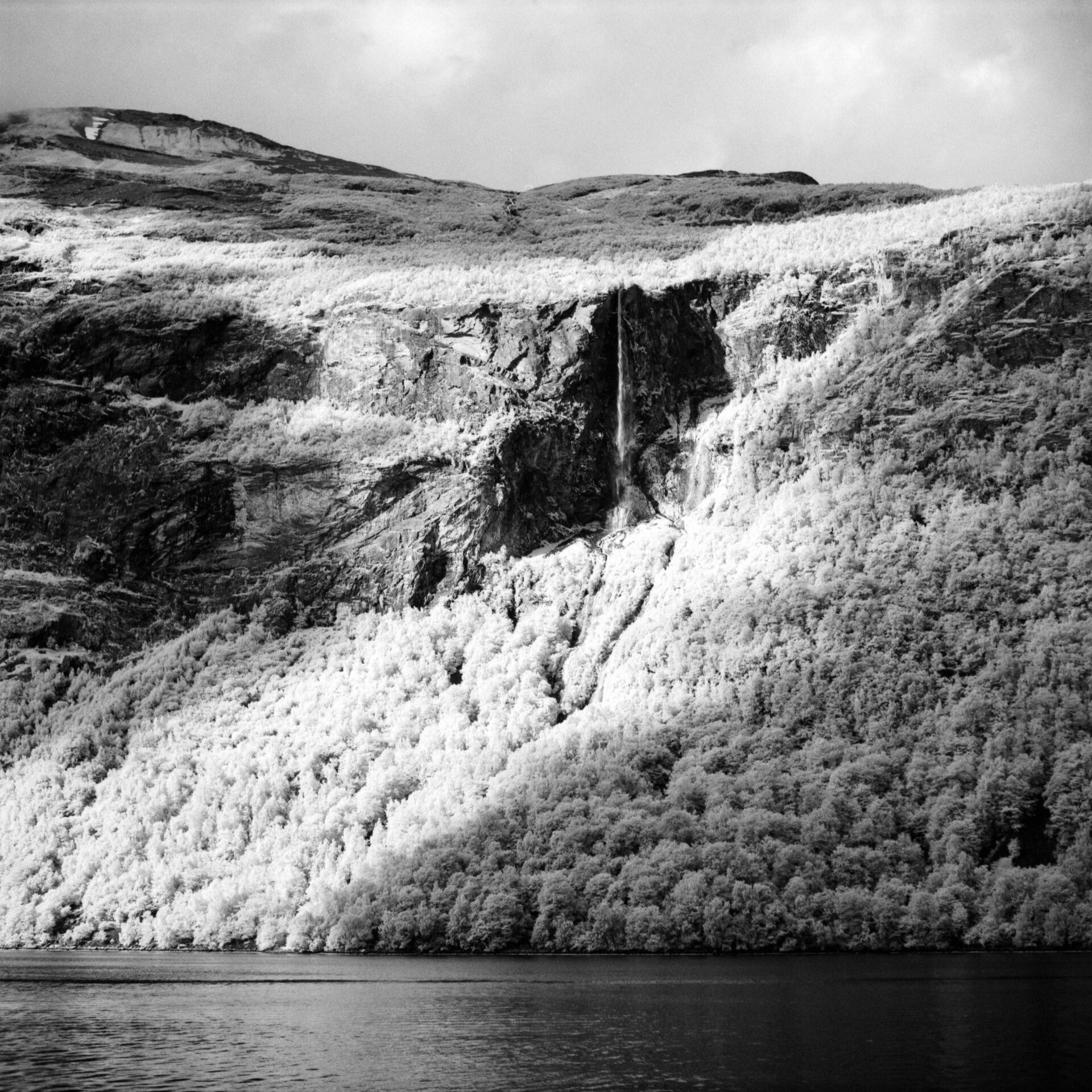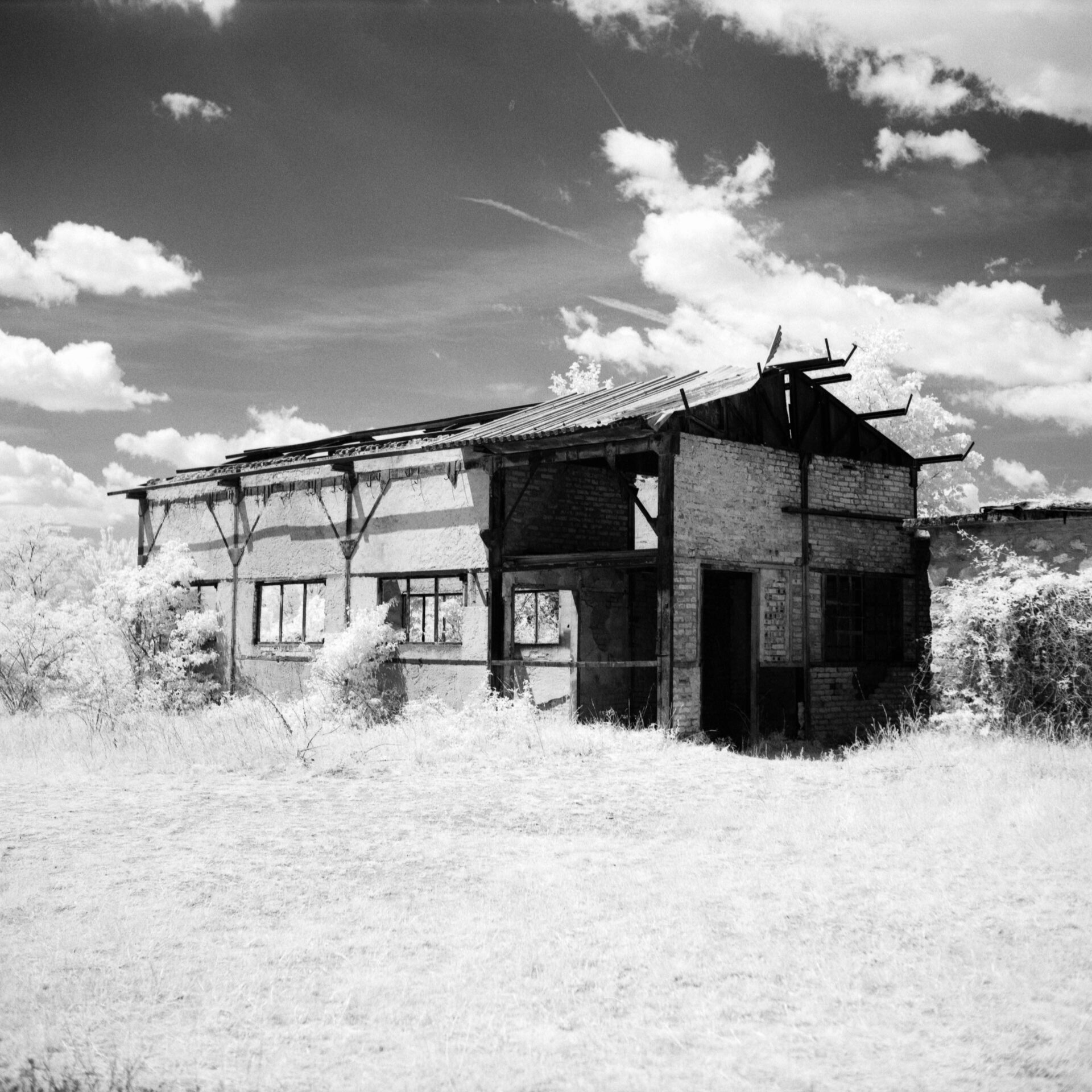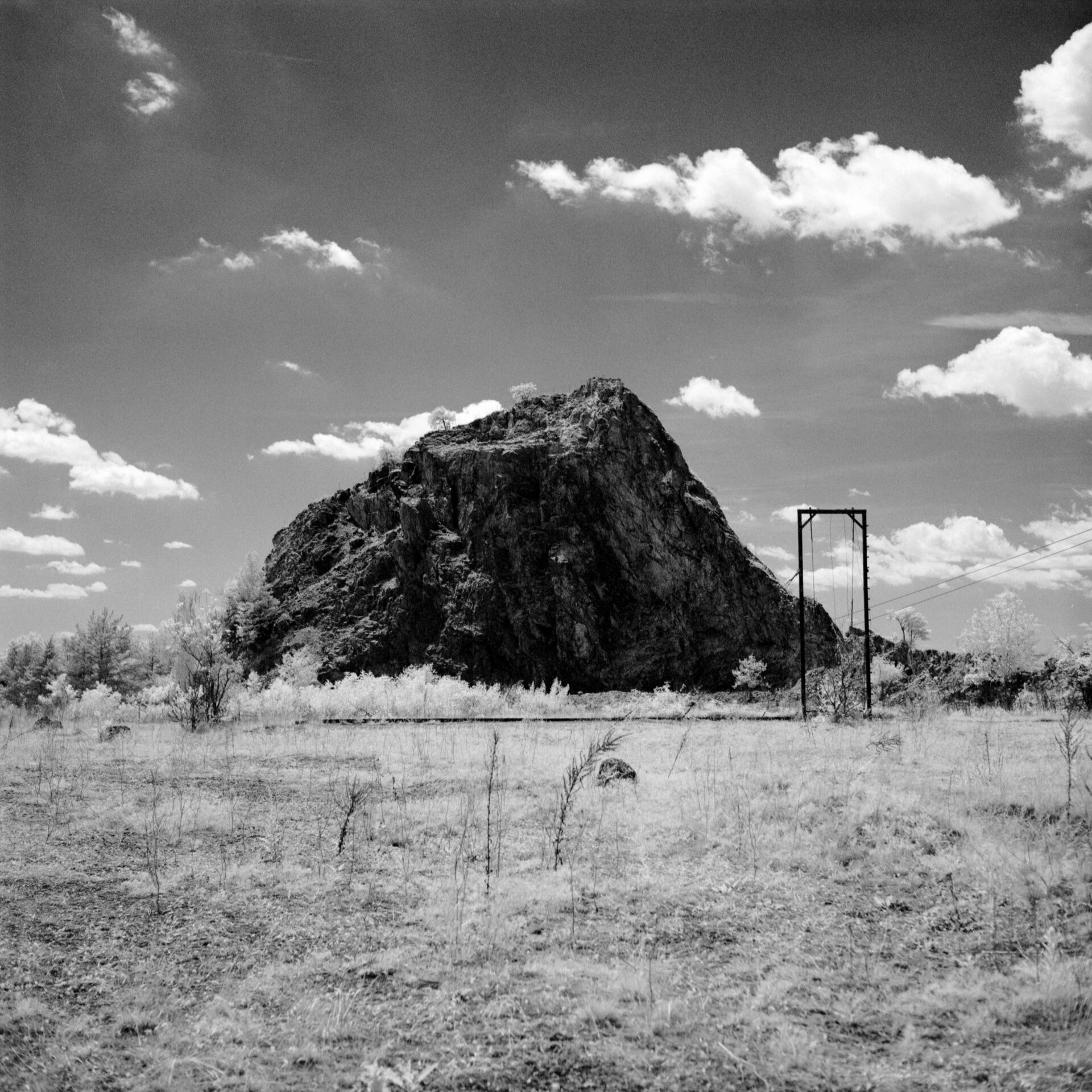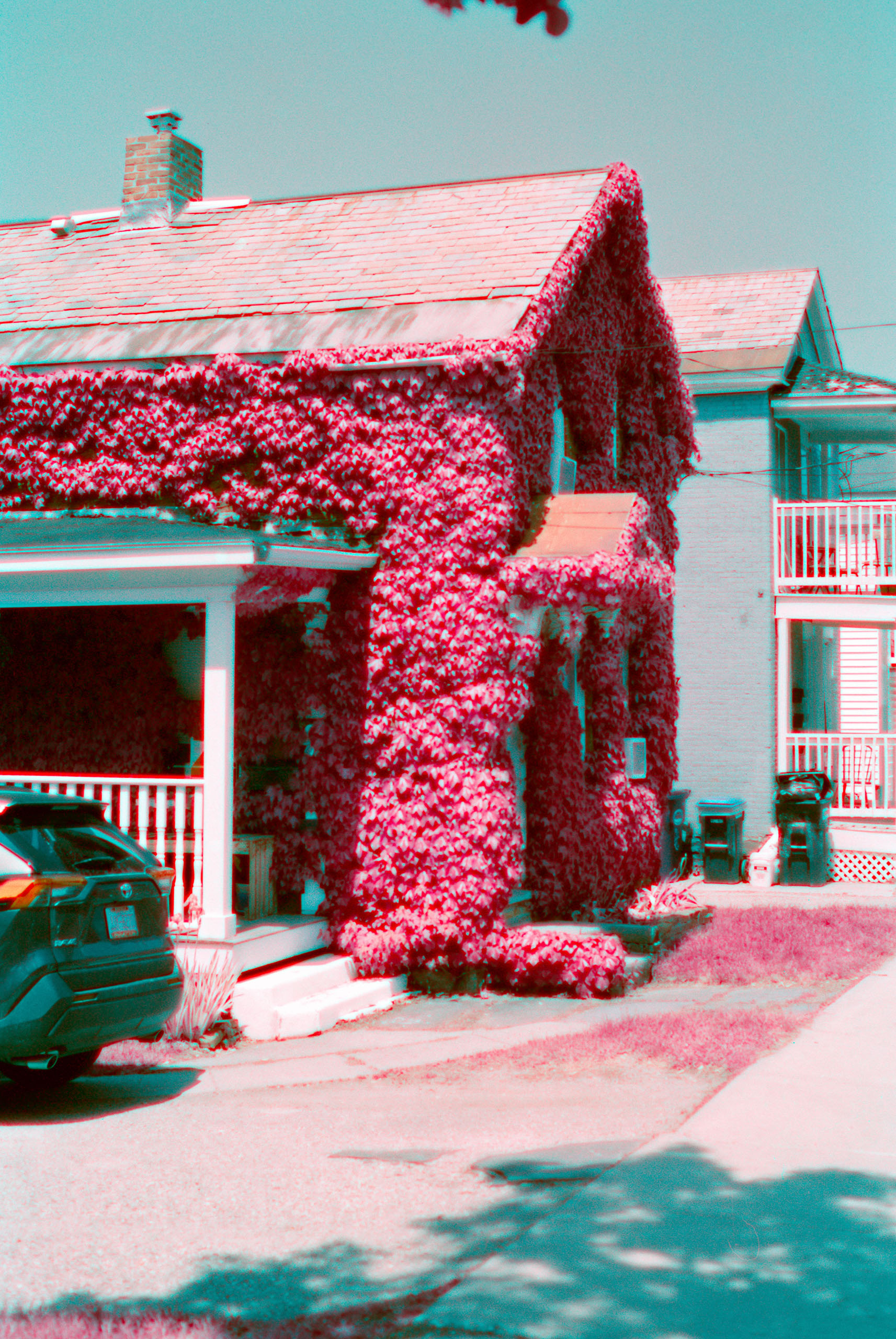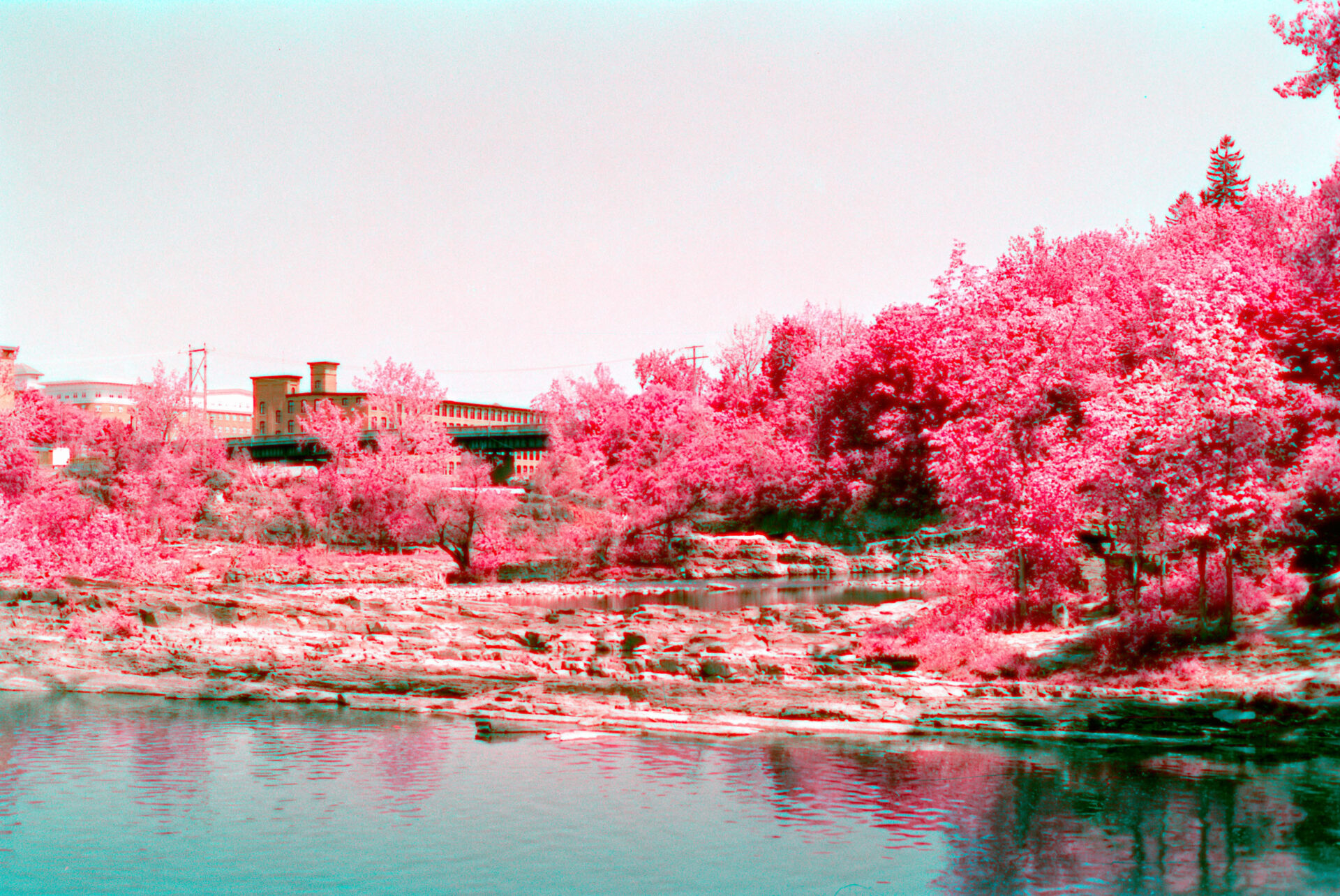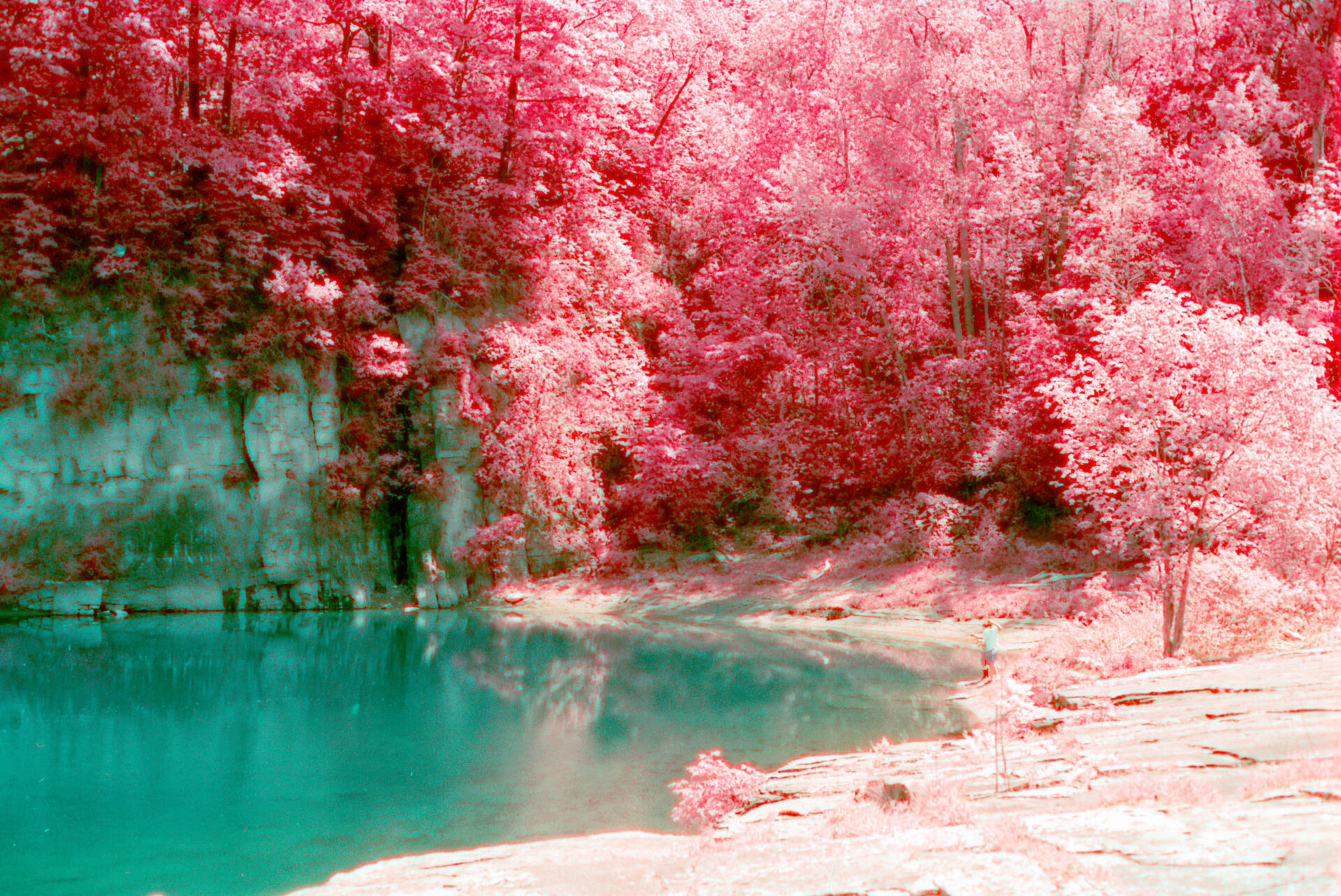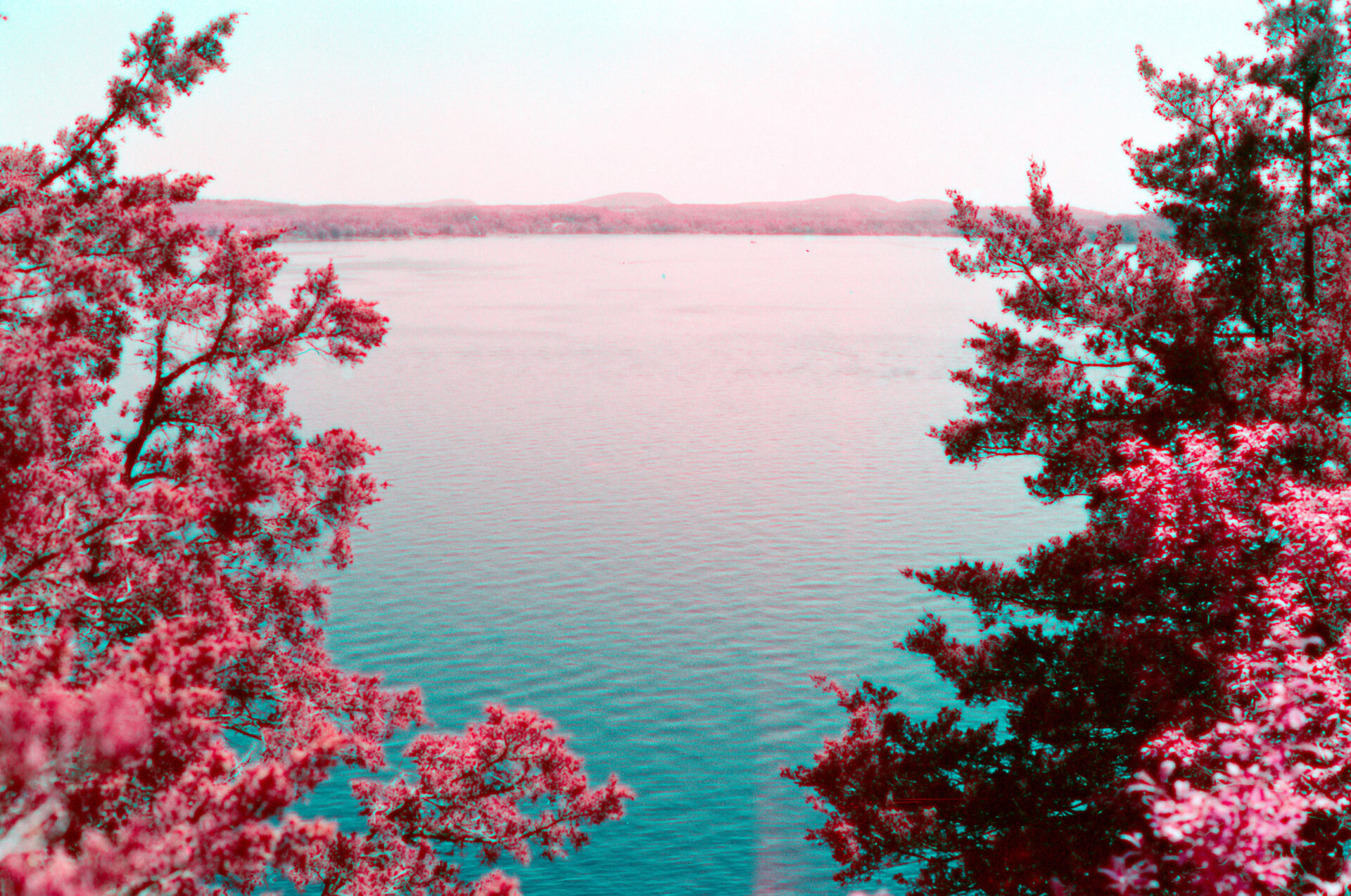
Sandw-IR-ch
Black and white
Infrared photography is a niche in the broad genre of photography, and especially within film photography. In the 1900s, it was discovered that chlorophyll reflects nearly all infrared lights. Due to the high presence of chlorophyll, plants render with a dreamlike glow in infrared photographs.
Black and white infrared film was subsequently developed and used in WWI and WWII to reduce haze in photographs. Film stocks reached consumer markets by the 1930s, and are readily available to this day.
The term black and white infrared film is somewhat misleading. The emulsion is sensitive to all of the visible spectrum and infrared. Therefore, when taking a picture without additional filters, the visible light will overpower the infrared, resulting in an ordinary-looking black and white picture. To obtain the characteristic glowing infrared effect, a deep red or infrared (R72) filter must be used to block out visible light, only letting some reds an infrared to pass through.
Aerochrome

The only known color infrared film stock was developed by Kodak during WWII, in this case intended for camouflage detection. It was released for the consumer market in the 1960s, and discontinued in 2007 due to low demand. There is currently no color infrared film stock available.
Alternative methods
There are still ways to reproduce the look of Aerochrome on film, the most common being trichromes. It involves taking 3 separate pictures with an infrared, green, and blue filter on black and white infrared film. The 3 images are then combined digitally to make up the channels of the final color image.
While this method works as long as the proper filters are used, it has many pitfalls: It requires the use of a tripod, and only stationary subjects can be photographed. Any movement in between shots (often caused by wind or cloud movement) will result in artefacts on the final image.
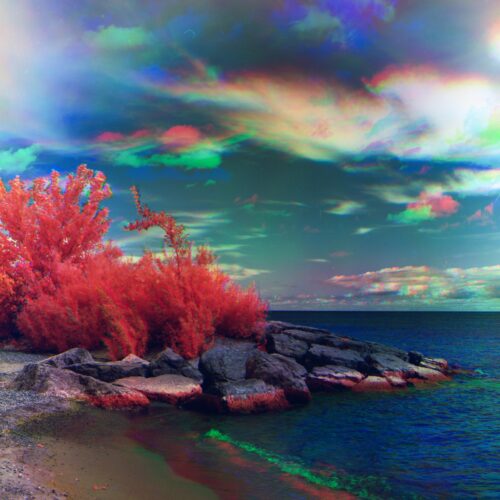
Another, lesser known, method is to modify a camera with multiple lenses by mounting the 3 trichrome filters to each lens. With this setup, the camera will take picture with each respective lens at the same time. The rest of the process is identical to the trichrome process. This allows taking pictures of stationary subject, however, some parallax will be introduced due to the different lenses, causing artefacting again.
My experiments
As such, my journey begins. I’ve been thinking of various methods to improve either methods mentioned above, until I had an idea. One that seemed incredibly absurd at first, but the more I thought about it, the more it made sense.
However, before I get started, there is one more thing I need to introduce, even if it may seem unrelated:
Halations
Halations are a phenomenon unique to film photography. It’s a bright, glowing, halo-like effect around extremely bright objects on pictures, caused by light passing through the film, bouncing back from the back of the camera and exposing the film again from behind.

On color film, halations are always red. This is because color emulsion is made, from front to back, a blue sensitive layer, a yellow filter, a green sensitive layer, a red filter and a red sensitive layer.
Because of the presence of the red filter layer, by the time the light makes it through the film, only red light is left.
Manufacturers usually add an antihalation layer that prevents this effect (to an extent), however, there are some film stocks being sold that are made without this layer on purpose for an artistic effect.
Sandw-IR-ch
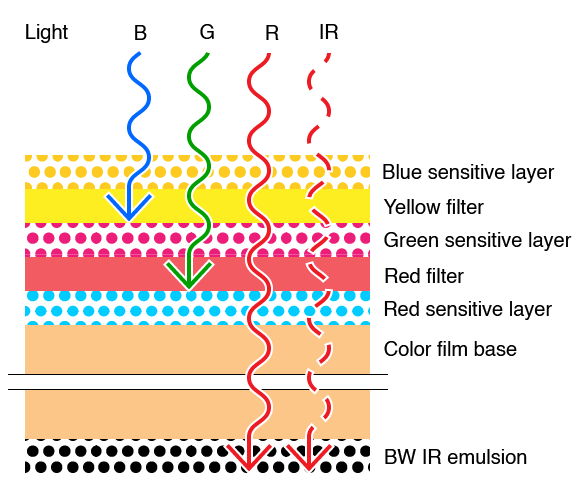
My idea was to simply tape black and white infrared film to the back of color film, and shoot them in the same camera at the same time. The method behind the madness is that, in theory, light would pass through the color film layer and expose the black and white layer. However, because the color film has a red filter layer, only red and infrared light would be left. Then, the 2 film layers would be separated again and developed individually. The process should result in an ordinary color image, and a black and white infrared image. The color image can then be digitally tweaked using the black and white infrared image to produce a color infrared picture.
To make this process work, I had to choose a color film that does not have an antihalation layer and has a sensitivity as low as possible, in order to maximize the light that could pass through it. I chose Kodak Vision3 50D with the antihalation layer removed, and my usual go-to for the black and white infrared, Rollei Infrared 400.
While this all sounded good in theory, only loading up a roll and shooting it would show if it works or not. So, I took a few pictures with the method described above.
Color
Black and white
Final image


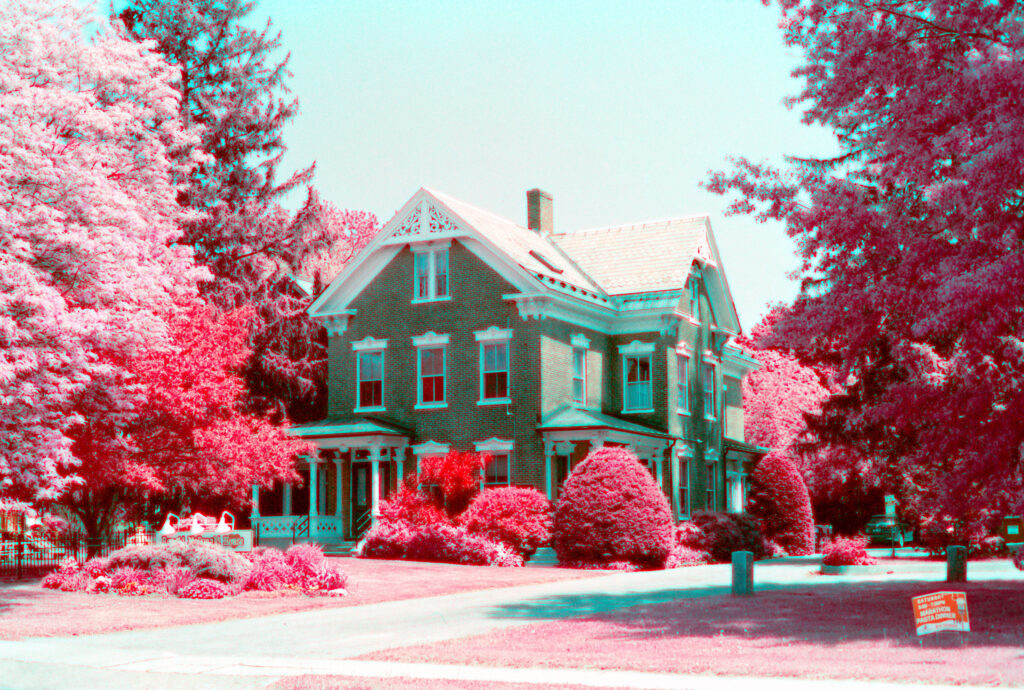
I was surprised by how well this worked. Since then, I extended this technique to medium format and have used it numerous times.

